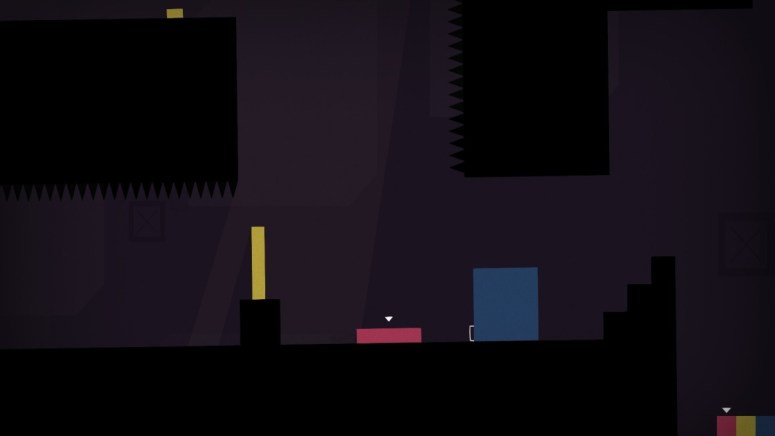“Thomas was alone. Wow… a weird first thought to have.” An ironic beginning to Mike Bithell’s 2012 indie darling, where the titular Thomas is anything but alone. A decade has passed since Thomas the rectangle first charmed players with his story of companionship and adventure, so we thought now would be the perfect time to take a look back at one of the titles that helped define a golden era for indie games.
For those unaware, Thomas Was Alone is a narrative-based puzzle platformer, set against the backdrop of a computer mainframe, where an unidentified “Event” has resulted in multiple artificial intelligence units to gain a sense of being and personality. We’re introduced first to Thomas, portrayed as naturally inquisitive and observant to the world around him. As the player traverses Bithell’s never-too-challenging puzzles, one quickly becomes two, two becomes three, and so on. As the cast expands, so too do the abilities available to the player, with each character bringing their own skill-set to the table. It’s a brilliant piece of game design, the expanding set of abilities allowing for a steady increase in difficulty curve, while intertwining seamlessly with one of the story’s main themes – insecurity.
Thomas, and the art of personification
In Thomas Was Alone, the main cast of Thomas, Chris, John, Claire and Laura are all presented as different colored quadrilaterals, though are brought to life by the sufficiently-sarcastic voiceover by Danny Wallace, who won a BAFTA Games Award for his role. Through the voiceover, Thomas delves into the thoughts and personalities of each character, though the game shines brightest when it explores each character’s thoughts on their role within the group. Initially, each character harbors individual insecurities, though as they prove their worth to the group by helping each other through the game’s levels, Wallace’s narration displays each overcoming this to form a larger tight-knit family. Take Claire, for example. Initially, she’s self-conscious about her size, and discouraged by the fact that can’t jump as high as the others. When she discovers that she can float, when the others can’t, Claire declares herself “Super Claire”, and embraces herself for everything she is, as opposed to anything she isn’t. By the time the credits roll on Bithell’s three-to-four hour adventure, it’s all-too-easy to forget you’re playing as rectangles.

Beautiful Minimalism
Though the combination of Bithell’s script and Wallace’s narration are the highlight, the game is tied together by a commitment to beautiful minimalism in almost every other aspect of its design. Each level is underlined by David Housden’s beautifully ethereal piano score, which evokes a sense of lonely exploration, projecting a feeling of naivety as each character learns to explore the new world they find themselves within. This is complemented by the visual design of the world, which is kept relatively simple, though with great use of shadow and color-pop that give the scenery a sense of depth. In 2022, where indie teams can create photorealistic games approaching AAA quality, Bithell’s visual design here stands strong as an example of why budget constraints are often the birth of creativity. This is a story that belongs to this world, one that would feel wrong placed anywhere else.
Thomas Was Alone regularly goes on sale on Steam for $1.99, and has appeared in multiple bundles over the years. The game is available just about anywhere video games have been able to be played over the last ten years, and its minimalist style and simple control scheme means the game plays well regardless of platform. Even a decade on, Thomas Was Alone remains an absolute must-play.

Daniel has been an avid gamer for as long as he could hold a controller, and an equally avid writer for as long as he could hold a pen. A creative writing graduate from Liverpool, Daniel spends more time than he’d ever care to admit losing himself in open-world RPGs





